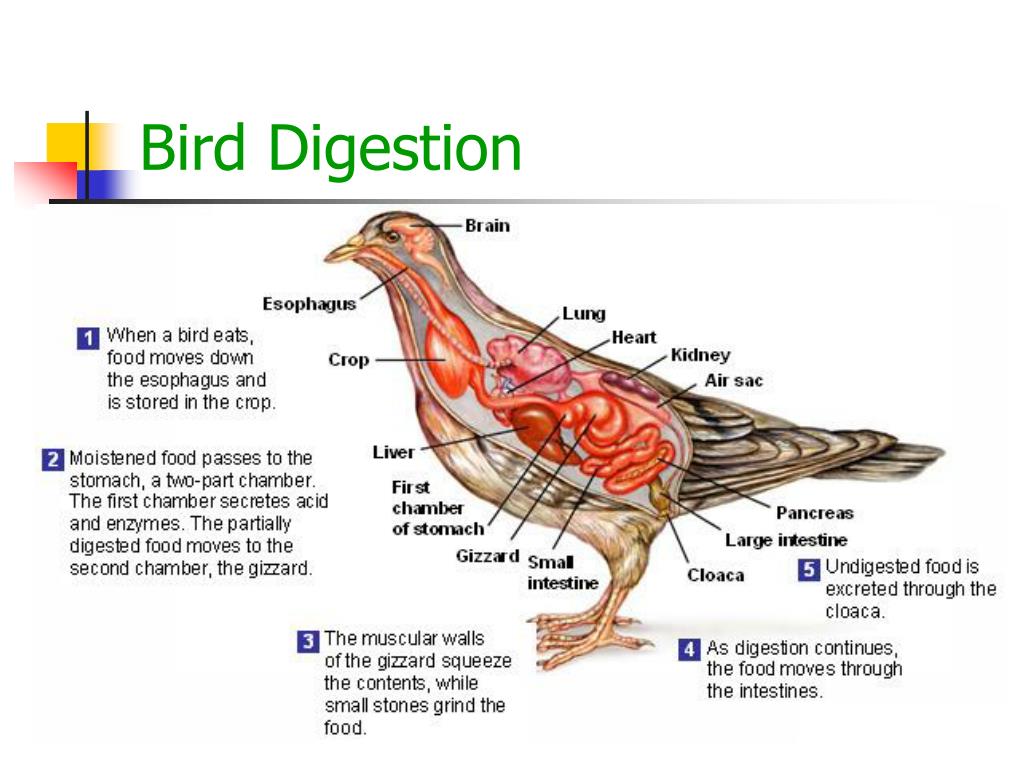
PPT Chapter 31 Reptiles and Birds PowerPoint Presentation, free download ID985403
Digestive System of Birds (Avian GI Tract) is elaborated to understand key functions of each part to learn and remember for critical Exams. Easy and Impressi.
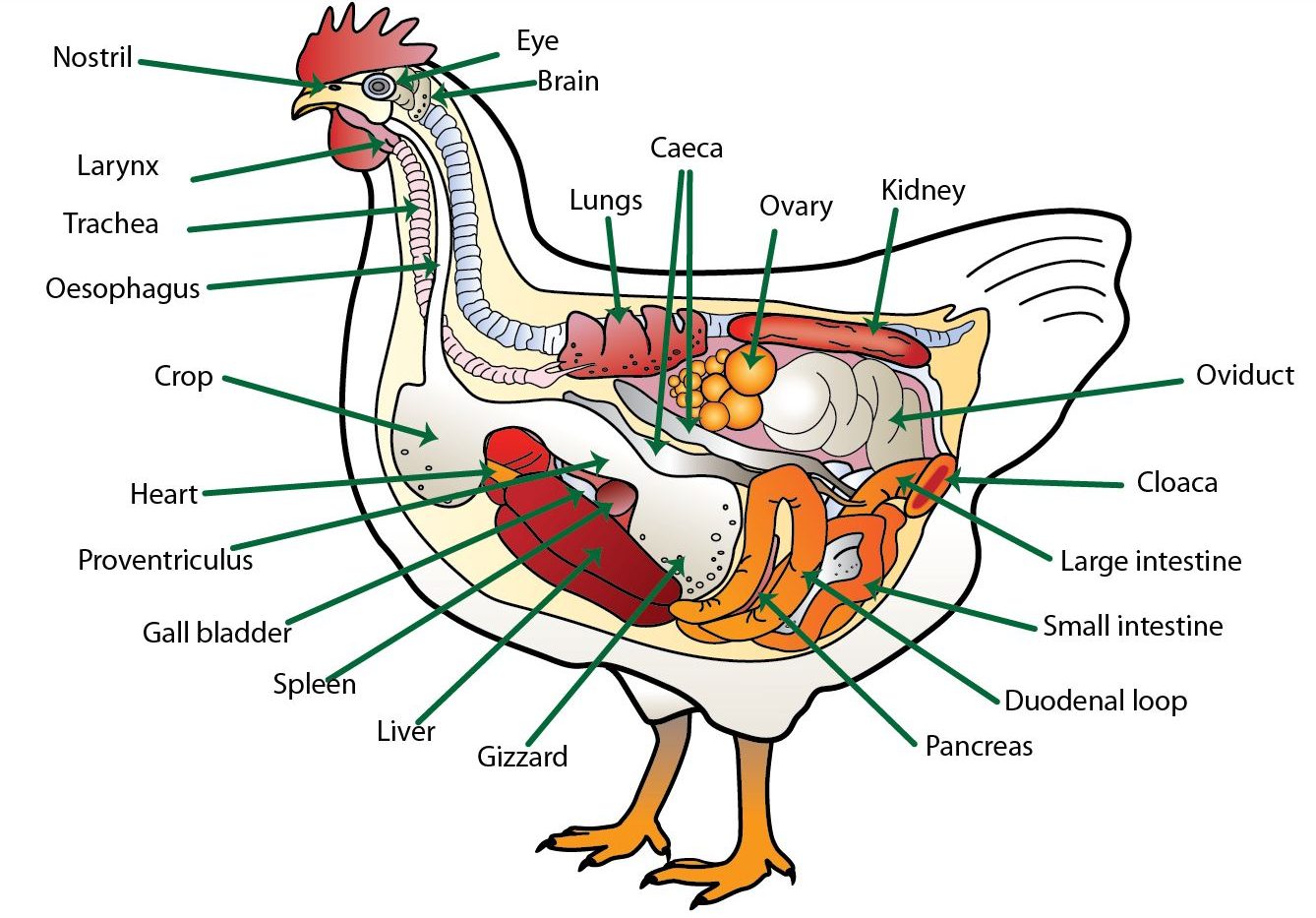
Digestive system Poultry Hub Australia
Figure 34.4.1 34.4. 1: Bird digestive system: The avian esophagus has a pouch, called a crop, which stores food. Food passes from the crop to the first of two stomachs, called the proventriculus, which contains digestive juices that break down food. From the proventriculus, the food enters the second stomach, called the gizzard, which grinds food.

PPT Class Aves PowerPoint Presentation, free download ID1443739
The digestive system of any animal is important in converting the food the animal eats into the nutrients its body needs for growth, maintenance, and production (such as egg production).. The ventriculus, or gizzard, is a part of the digestive tract of birds, reptiles, earthworms, and fish. Often referred to as the mechanical stomach, the.

Bird Digestive YouTube
The crop stores food temporarily and starts the digestion process before it enters the stomach. It is a thin-walled pouch at the base of the esophagus where birds can store food before it is sent the rest of the way to the stomach. When the crop becomes empty, hunger signals are sent to the brain telling the bird it is time to eat.
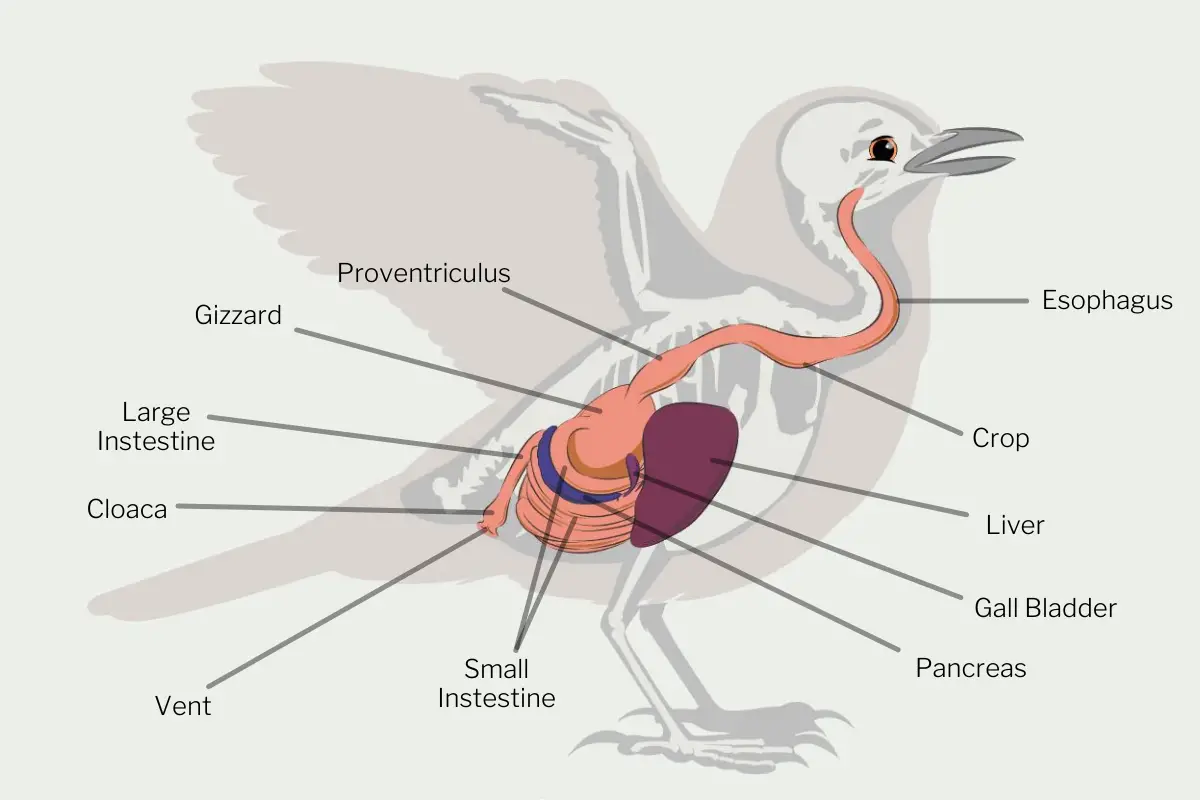
How Do Birds Digest Food? The answer will amaze you
Courtesy of Soerfm, Wikimedia Commons. Not considered part of the actual digestive system itself, the crop acts more as a holding area.Being able to consume a large amount at once but not digest it straight away is advantageous in many situations, such as when feeding out in the open, a big risk to many birds.. Instead of returning time and again to take small amounts, they can make off with.

Bird Digestion. Photo credit Angelika Elsebach/Getty Images
Birds have developed a digestive system adapted to eating unmasticated food. Monogastric: Single-chambered Stomach. As the word monogastric suggests, this type of digestive system consists of one ("mono") stomach chamber ("gastric"). Humans and many animals have a monogastric digestive system as illustrated in Figure \(\PageIndex{5}\).
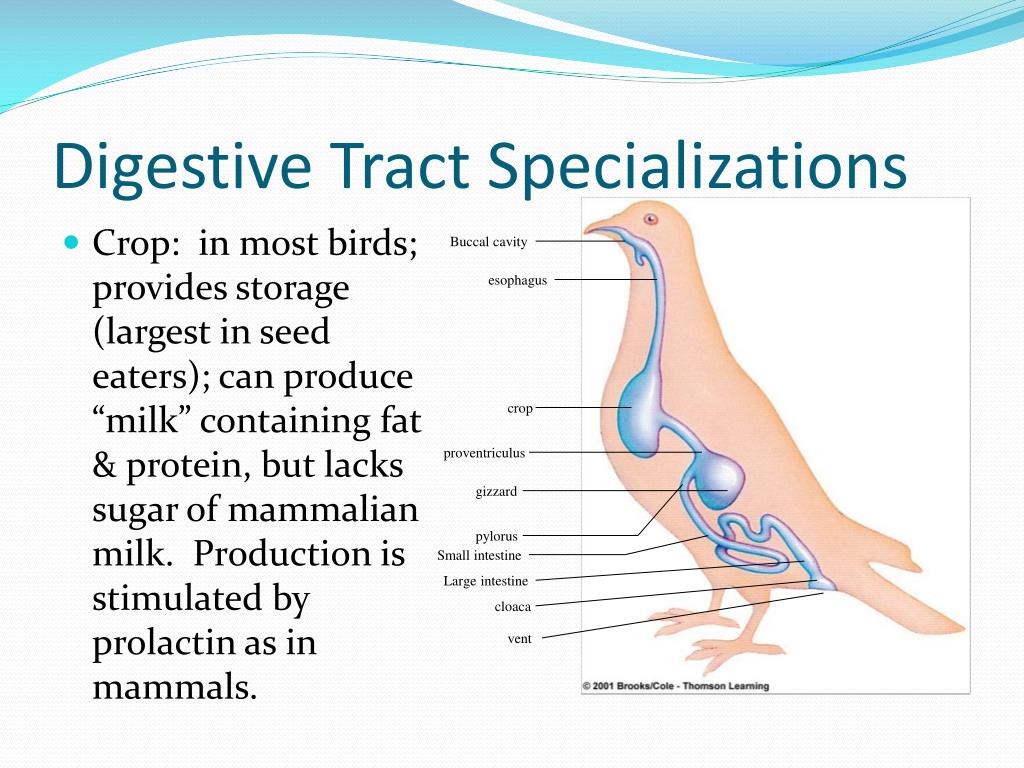
PPT Birds (Class Aves) PowerPoint Presentation, free download ID2184007
A bird's gastrointestinal (GI) tract morphology, digestive strategy, and metabolic capability have been intimately intertwined during evolution to match the nutrient content and physical at- tributes of foods available in its natural habitat. When compared across species, the GI tract is the most anatomically diverse organ system.
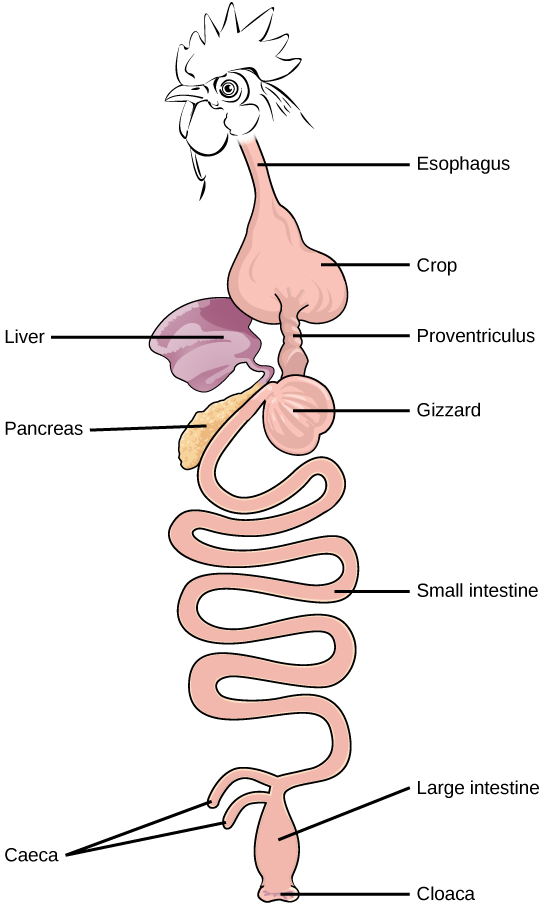
15.1 Digestive Systems Concepts of Biology1st Canadian Edition Molnar
Birds depend heavily on their digestive systems to remain nourished and healthy. Many birds can starve in hours if deprived of food, therefore, their digestive system is faster and more efficient than those of other vertebrate groups. Digestion in birds involves a lot of organs, each performing a specific function.
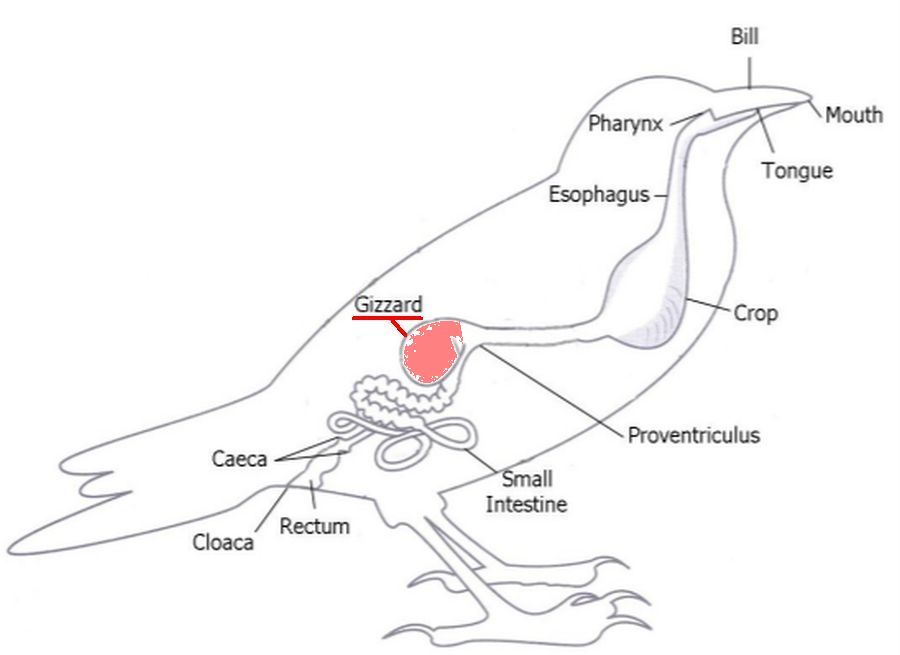
Bird Anatomy Outside My Window
Bird Lung (left), Bird Digestive Tract (right) Nervous System and Sense Organs. Birds have a large brain relative to the size of their body. Not surprisingly, the part of the brain that controls flight is the most developed part. The large brain size of birds is also reflected by their high level of intelligence and complex behavior.

Bird Digestion
Digestive system of a bird. Merck & Co., Inc., Rahway, NJ, USA (known as MSD outside of the US and Canada) is dedicated to using leading-edge science to save and improve lives around the world. The Veterinary Manual was first published in 1955 as a service to the community. The legacy of this great resource continues in the online and mobile.

Avian Digestive System
Digestive system of a bird. In these topics. Pet Owner Version: Description and Physical Characteristics of Birds. Merck & Co., Inc., Rahway, NJ, USA (known as MSD outside of the US and Canada) is dedicated to using leading-edge science to save and improve lives around the world. The Veterinary Manual was first published in 1955 as a service to.
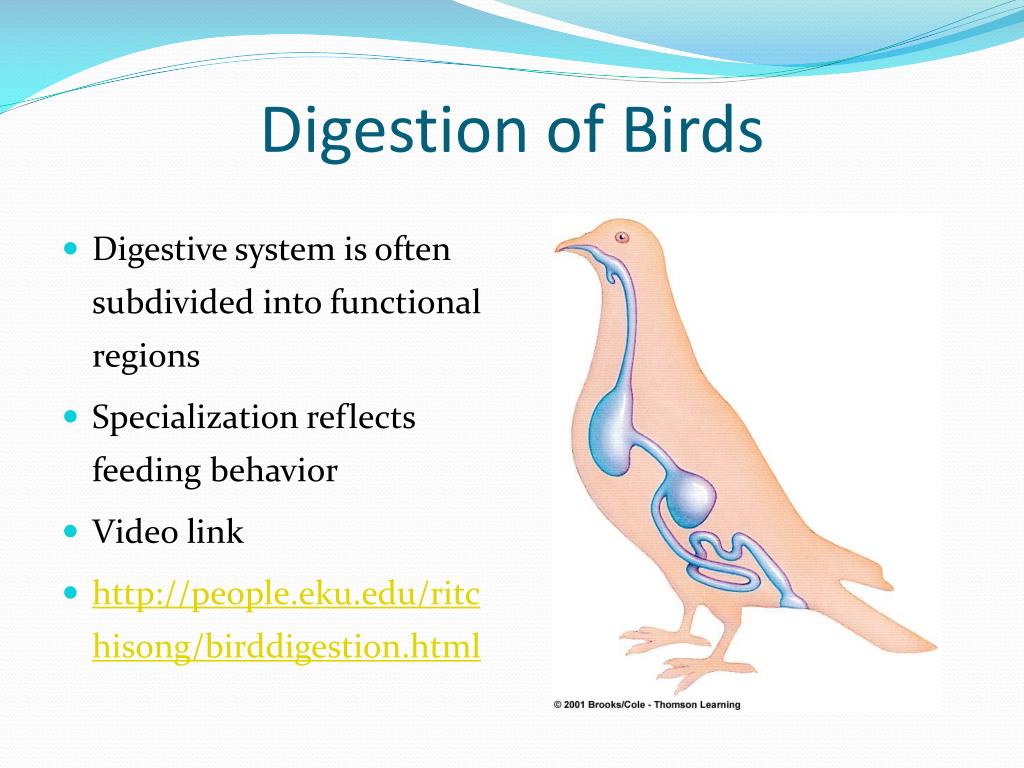
PPT Birds (Class Aves) PowerPoint Presentation, free download ID2184007
The major components of the avian digestive system are the alimentary canal plus several accessory structures. The 'canal' includes the oral cavity, pharynx, esophagus (which includes a crop in some birds), stomach (proventriculus & gizzard), small intestine, & large intestine.. birds received a high digestive quality diet of the flesh from.

19.5 Birds Guest Hollow
Birds have a small intestine that seems very similar to the small intestine of mammals. A duodenum, jejunum and ileum are defined, although these segments are not as histologically distinct as in mammals. The proximal small intestine receives bile from the liver and digestive enzymes from the pancreas, and the absorptive epithelial cells are.
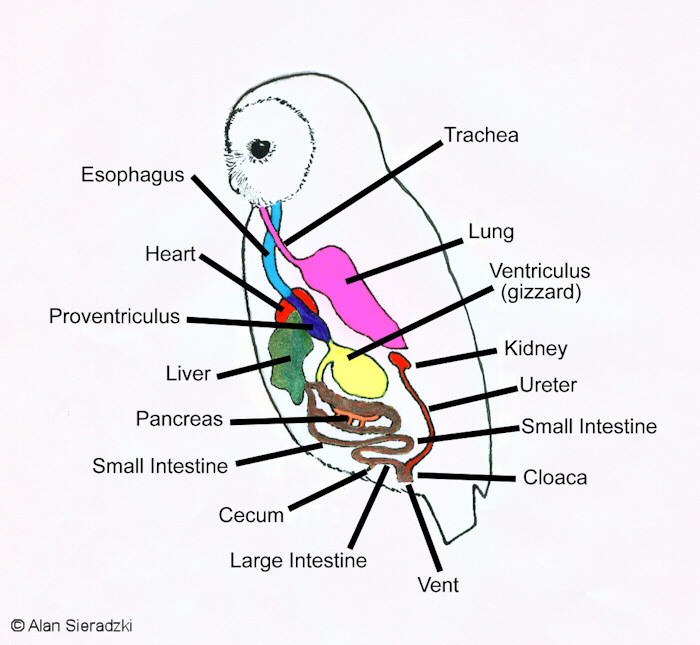
Digestion in Owls The Owl Pages
The digestive system of the birds includes more regions than ours. The first region is the beak with the fleshy tongue, followed by the esophagus. As seed-eaters, budgies have a crop. This is a sack-like pouch of the esophagus located at its lower section. The crop fulfills two different tasks: First, the food is moistened in it, but the actual.
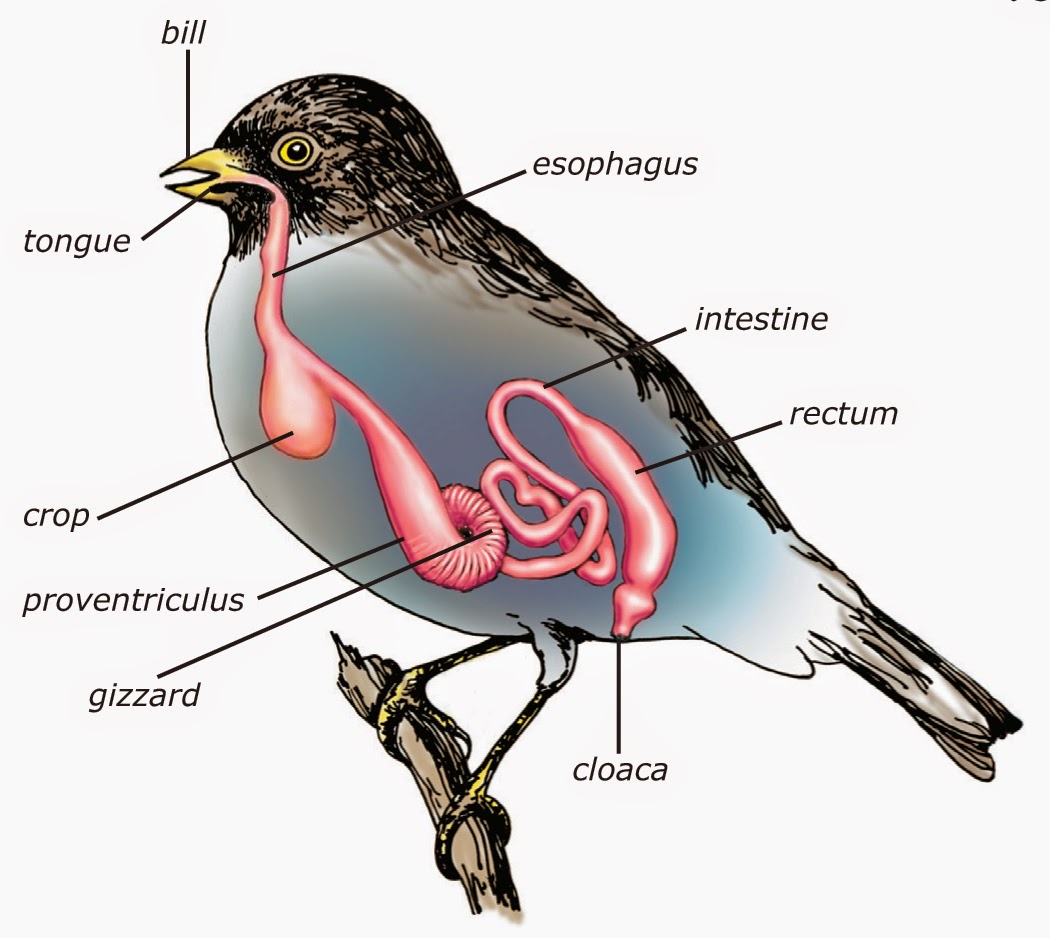
King's Christian School Biology Bird Systems
Birds. In a bird 's digestive system, the crop is an expanded, muscular pouch near the gullet or throat. It is a part of the digestive tract, essentially an enlarged part of the esophagus. As with most other organisms that have a crop, it is used to temporarily store food. Not all bird species have one. In adult doves and pigeons, it can.

Modified part of___________ is the gizzard of the grain eater birds. a)Oesophagusb
The digestive system of birds has adaptations to facilitate flight. Many birds operate on a thin margin of metabolic safety and may require a constant source of feed to sustain activity. Birds cannot afford to store heavy food materials for long periods and digest their food rather quickly relative to mammals. In addition, the avian intestinal.